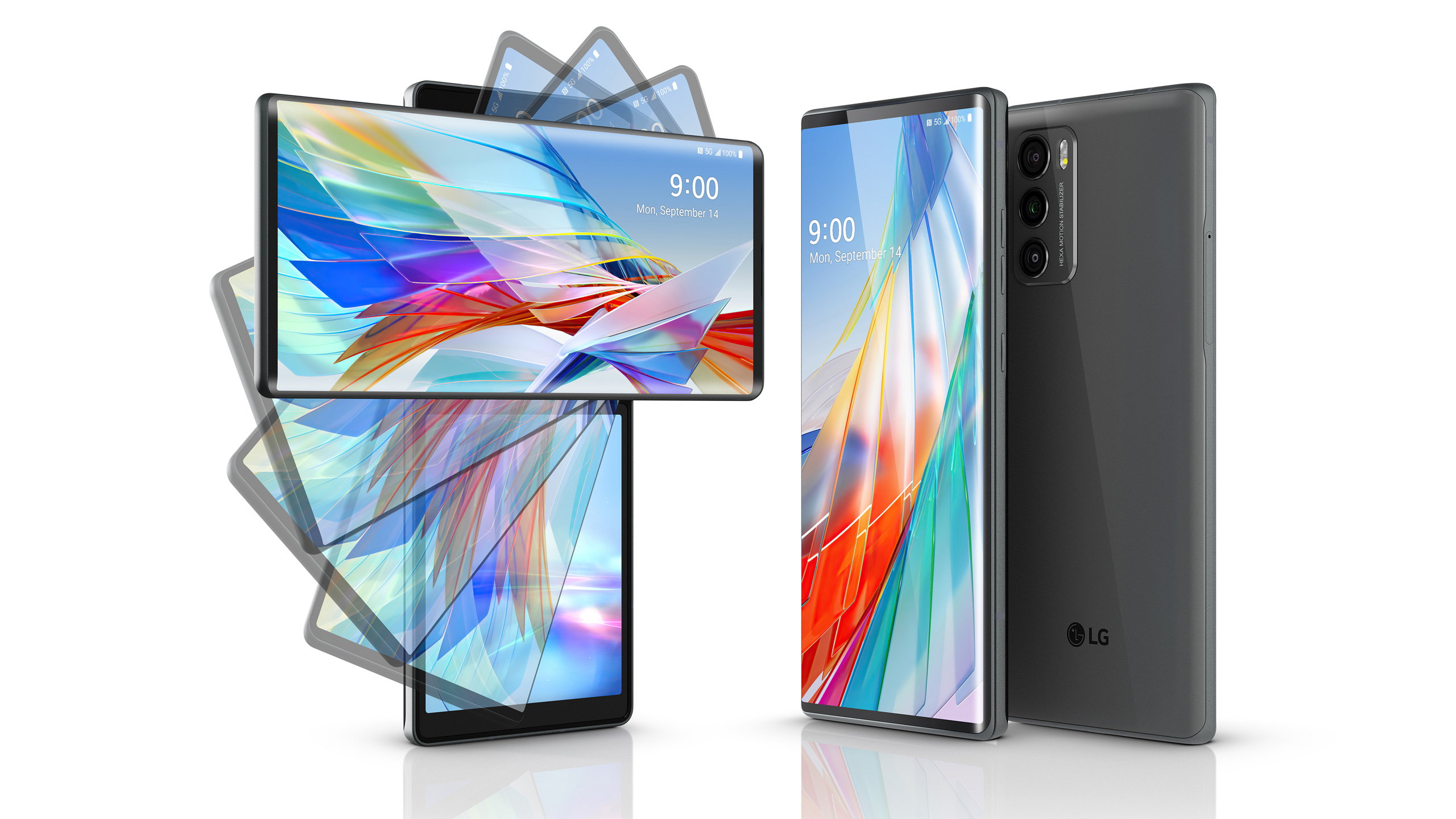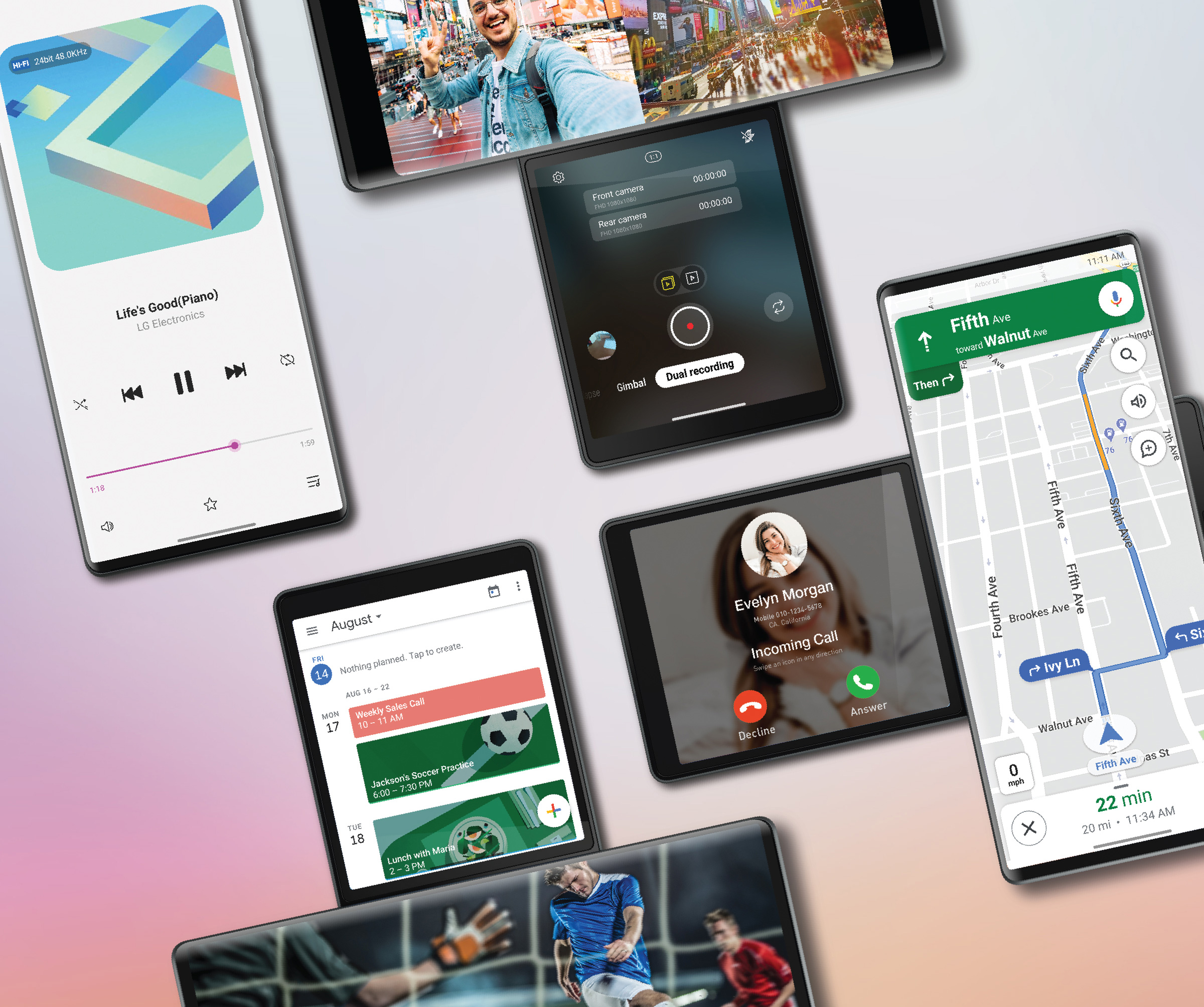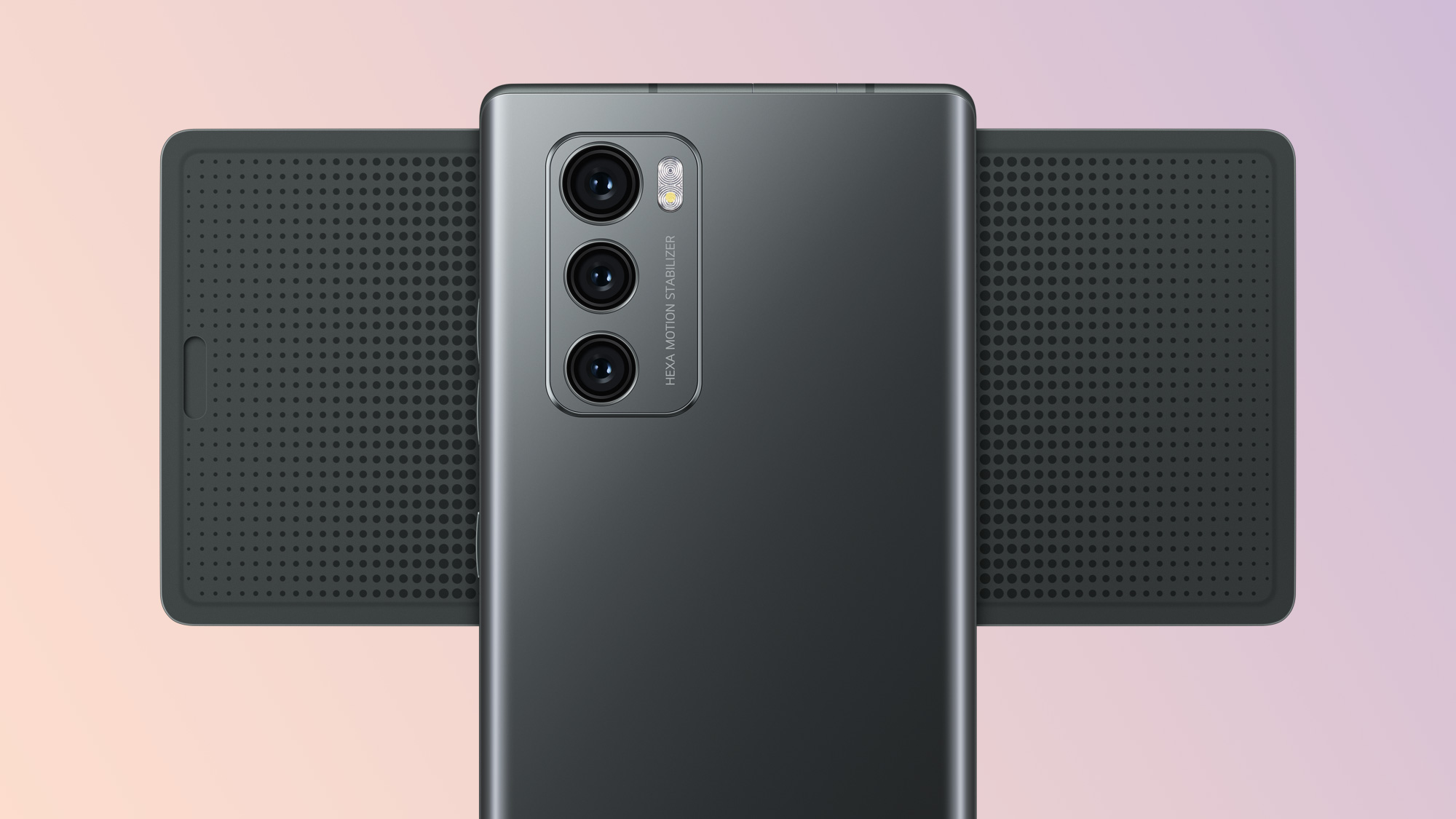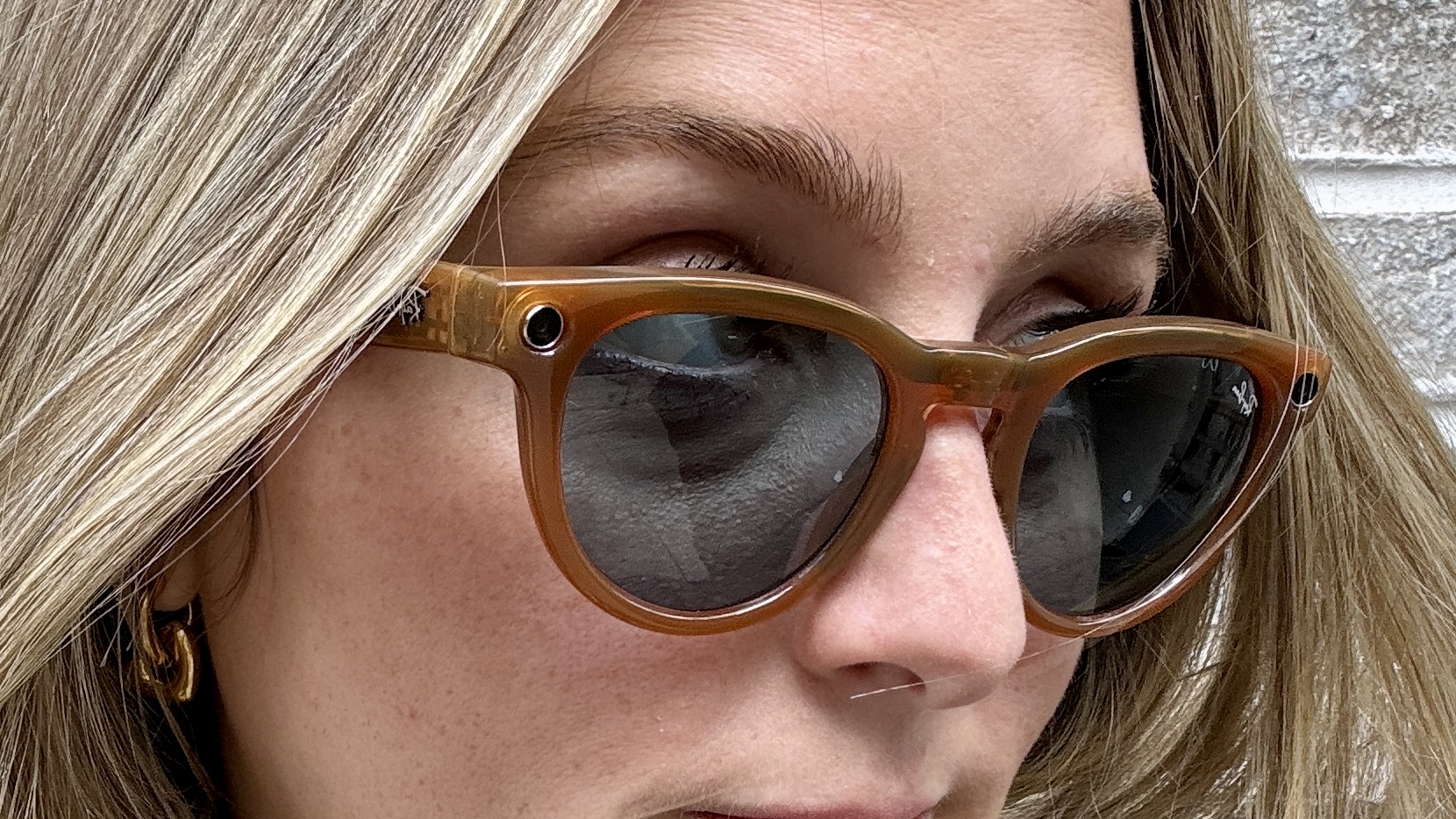LG Wing release date, price, specs and what the dual screens do
The LG Wing doesn’t flip or fold, but it is unlike any phone you’ve ever used before

Release date: Oct. 15
Price: $999
Displays: 6.8-inch OLED and 3.9-inch secondary OLED
CPU: Snapdragon 765G
RAM: 8GB
Storage: 256GB; expandable up to 2TB
Rear camera: Triple-lens: 64MP wide (ƒ/1.7), 13MP ultrawide (ƒ/1.9), 12MP ultrawide with gimbal (ƒ/2.2)
Front camera: 32MP
Battery: 4,000 mAh
Size (closed): 6.67 x 2.93 x 0.43 inches
Weight: 9.74 ounces
In a year that’s featured a number of weird phones — from ambitious foldables to almost retro-looking flip phones to dual-screen devices that open like a book — the LG Wing might just be the strangest of them all. Arriving Oct. 15 on Verizon first, the LG Wing is indeed a dual-screen phone itself, though it’s unlike any you’ve ever seen before.
Rather than placing its panels side by side, the LG Wing stacks them, one on top of the other. In its most compact state, it looks like any other big candy bar-style handset. But flick that top portion 90 degrees to the side, and the Wing will take on a “T” shape, with a horizontal 6.8-inch display hovering above an almost-square 3.9-inch one.
As you can expect, LG has envisioned an assortment of use cases for the Wing’s unique form factor. Here’s everything we know about it.
- The best Android phones you can buy now
- Samsung Galaxy Z Fold 2 review: This is the best foldable phone ever
LG Wing: Price and release date
The LG Wing will cost $999 when it launches first at Verizon on Oct. 15 for $999. Preorders begin at Big Red on Oct. 1, and buyers can get the phone for free with an eligible trade-in and a new line of service. Eventually, the Wing will make its way to T-Mobile and AT&T at a later date to be announced. LG hasn't shared any details regrading unlocked availability at this time.
With the Microsoft Surface Duo costing $1,400 and Samsung's Galaxy Z Fold 2 priced at a whopping $2,000, there is a real opportunity for LG to bring some dual-screen utility to a more accessible segment of the market under $1,000.
LG Wing: Design and displays
Steal a glance at the LG Wing when it's all folded up, and you could easily confuse it with almost any other big 2020 Android flagship. But spin the display out, and things change very quickly.
What makes the Wing’s highly asymmetrical design interesting is that LG encourages users to hold the device in a variety of orientations, depending on what they’re trying to do. For example, “T” mode might make the most sense for capturing widescreen video with one hand, while accessing capture controls on the bottom panel.
Get instant access to breaking news, the hottest reviews, great deals and helpful tips.
However, when gaming, you want the wider display in your hands — so in such a scenario, you might purposefully hold the Wing upside down, with the square screen up top. And as we’ve seen in leaked demonstrations, sticking the Wing sideways into a car mount is an efficient use of space if you’re trying to run Google Maps navigation and a media player at the same time.

If you’re wondering whether that nifty hinge will be able to withstand the rigors of everyday use, LG says not to worry. The Wing has been tested to withstand up to 200,000 swivels, which the company estimates should work out to five years of ownership. The phone also comes with a two-year warranty standard, should any manufacturing defect cripple the device. Warranties that long are rare among smartphones, so that should provide some welcome peace of mind.
In terms of size, placing screens on top of each other has unsurprisingly made the Wing bulkier than your average handset. In a live demo, LG stacked the Wing next to the LG Velvet, with the new device being noticeably thicker. According to the spec sheet, LG’s dual-screen phone is more than a tenth of an inch deeper than the Velvet. And considering how large the Wing’s main 6.8-inch display is, we anticipate this will not be a device that will easily slip into pockets.
LG Wing: Software
The LG Wing deploys its displays differently depending on what apps you’re using. If you happen to receive a phone call while using the primary screen to watch video or for navigation, the call should automatically be funneled to the smaller panel. LG’s first-party apps are also built to recognize and use the extra real-estate dynamically, evident in how the camera controls are saved for the second panel while the viewfinder takes up the main one.
We expect there will be many cases like these across the LG Wing’s user experience, that will be more evident when we get our hands on a unit and explore the software. LG says everything it’s added to Android to enable these dual-screen capabilities is open source, and that it encourages third-party developers to make use of that code to enhance their apps for the Wing if they wish to.
That said, it’s hard to imagine Android developers pouring extra work into versions of their apps for just one phone model; we’ve seen this story play out in a similar fashion many times before in the Android world. It’ll ultimately rest with LG to extract the most potential out of the Wing’s unique design and make its case to buyers.
LG Wing: Cameras

On the back of the LG Wing, you’ll find three lenses: a 64-megapixel main shooter, as well as two optics backed by ultrawide sensors, rated at 12 and 13 megapixels. The front-facing camera — which is housed in a pop-out mechanism concealed within the top edge — carries a 32MP shooter.
While the 64MP primary lens might seem like the star of the show here, it’s actually not. Rather, that 13MP ultrawide camera is actually supported by a gimbal mechanism — the second phone with such a feature since the Vivo X50 Pro dropped over the summer.
The gimbal is possible thanks to LG’s new hexa motion sensor system, which helps it ensure stable recording, and allows the camera to pan and tilt independently of the device, thanks to an on-screen joystick. It’s impressive technology to find in a device that is already so vastly different from any other phone on the market today.
Interestingly, the 13MP gimbal-backed lens had to be oriented horizontally so it can record landscape shots and video while you’re holding the Wing vertically. As a result, LG needed to shove a second ultrawide camera in there for conventional shooting scenarios. It’s an approach that makes sense, though, we question if it might have been more helpful to the user to include an optical zoom telephoto instead. The Wing makes no provisions for lossless zoom, at least in hardware, so we hope LG’s digital zoom algorithms are up to snuff when snapping away from afar.
LG Wing: Performance and battery
The LG Wing is supported by Qualcomm’s Snapdragon 765G system-on-chip. This is the very same processor found inside the LG Velvet, as well as countless other lower cost 5G phones, including the OnePlus Nord and likely the yet-to-be-released Google Pixel 4a 5G.
I have some reservations about the 765G’s ability to drive two displays simultaneously, though LG believes this CPU is up to the task, pointing out that the Velvet is able to accommodate multi-window mode well with the very same processor.
That silicon is paired with 8GB of RAM and 256GB of built-in storage. The Wing also features a microSD card slot for expandability by up to another 2TB.
Keeping those displays lit and that processor chugging along is a 4,000-mAh battery. LG says it has heavily optimized the power draw and general efficiency of the Wing specifically to maximize longevity on a charge. While the company didn’t go into specifics, we’re eager to put that to the test when we get the WIng in for review.
LG Wing: Outlook
I have to admit: I still think the LG Wing looks pretty silly, even though there’s clearly some potential utility to its design. The fact that the Wing’s two displays are so different opens this device up to different kinds of multitasking scenarios than, say, Microsoft’s Surface Duo. Capturing photos and video, for example, looks to be something the Wing is well-suited for.
Regardless of how you feel about the Wing’s design or whether you believe you’ll be able to extract any benefit from it, you can’t deny that LG is refusing to rest on its laurels. Born out of an internal incubation initiative called LG Explorer, the Wing certainly takes chances most phone makers aren’t right now. We look forward to finding out if those chances have paid off soon.
Adam Ismail is a staff writer at Jalopnik and previously worked on Tom's Guide covering smartphones, car tech and gaming. His love for all things mobile began with the original Motorola Droid; since then he’s owned a variety of Android and iOS-powered handsets, refusing to stay loyal to one platform. His work has also appeared on Digital Trends and GTPlanet. When he’s not fiddling with the latest devices, he’s at an indie pop show, recording a podcast or playing Sega Dreamcast.
